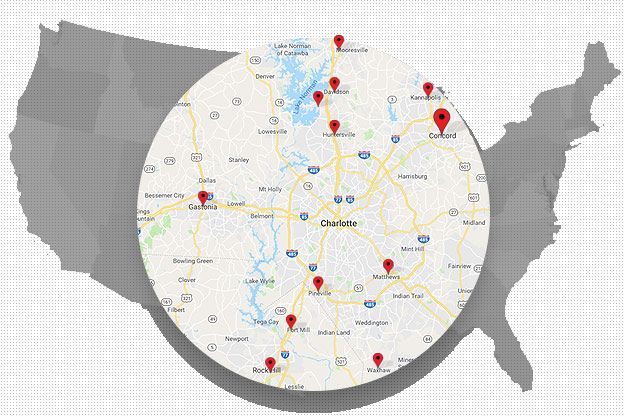7 Tips on How to Have a Dry Basement

There are few problems as challenging as a wet basement, which is a familiar pain for many homeowners. In fact, around 98% of basements will eventually experience a leak.
Luckily, there is a lot you can do to prevent your basement from experiencing water damage, and it’s easier than you may think. Let’s talk about how to keep a dry basement.
1. Run a Dehumidifier
Water doesn’t have to come in through a flood. Sometimes, it comes out of thin air.
Running a dehumidifier in your basement will prevent excessive moisture from accumulating in your basement, which will help prevent mold and other issues in your basement.
Allowing your dehumidifier to run will also help clear condensation from your foundation walls and even smaller puddles before they begin to build. If there’s a lot of moisture on the walls or floor, use a fan along with the dehumidifier for the quickest results.
To help dry out a damp basement, simply keep your dehumidifier running. If you have a sink in the basement, you don’t even have to worry about emptying out the bucket every day.
Simply elevate your dehumidifier by placing it on a table next to your basement sink and attaching a hose and emptying it into the drain of the sink to prevent the bucket from filling up.
2. Use Charcoal
Placing charcoal in high-moisture areas in your basement will help alleviate odors caused by damp basements. If your primary concern is low levels of moisture causing mold, then this tip will go a long way. However, it won’t help with significant water levels.
3. Make Sure Your Sump Pump Works
If you don’t already know, your sump pump is the pump that sits at the lowest level of your basement and pumps water out. However, there is no alarm to alert you if the sump pump is clogged or even plugged in.
Periodically, as you walk down to your basement to do laundry, reset your WiFi router, or adjust your water heater, don’t hesitate to double-check your sump pump, just as you would with your dryer’s lint trap.
Also, don’t neglect sump pump maintenance. Like every appliance in your basement, proper maintenance will ensure that your sump pump continues working properly for years to come.
4. Check Your Pipes
A leaking pipe will bring water into your basement and potentially damage your upstairs floors. Always check the pipes in the basement to see if there are any leaks, but also check under your kitchen sink, behind toilets, and elsewhere, as water could easily be escaping under the radar.
Also, try to insulate your pipes. If you live in a colder region, you probably already do this to prevent them from freezing. However, this is just as beneficial to prevent cold water pipes from sweating during hot, humid days.
5. Follow Best Practices Upstairs
No water balloon fights on the first floor. We’re kidding, of course.
On a serious note, there are plenty of ways for water to seep into your basement from the upper floors. Although, they are easy to prevent.
To start, try your best to keep shower water in the shower. You need a liner that stays on the inside of the shower to prevent water from flowing out onto the floor. Also, make sure you use a bath mat to soak up water that does find its way onto the floor.
Next, make a habit of keeping a towel within reach of the shower so you aren’t dripping water all over the floor every time you take a shower. If you notice a faucet that leaks, get it fixed right away.
Also, if you notice water on the floor from your sink, spills, or anything else, take the extra second to clean them up. These small steps will go a long way.
6. Determine The Source
Water could be coming in from anywhere. Determining the source of the water is the best way to help figure out an appropriate solution.
Is it coming from the windows? It could be from your landscaping or irrigation system. Is a puddle forming in the middle of the floor? Check the pipes above or feel the insulation to see if it’s wet.
Try your best to follow the flow of the water and determine its source and then you will be able to address the situation.
7. Waterproof Your Basement
The truth is that water will eventually find its way into your basement one way or another without a proper seal.
The best way to keep a basement dry is to prevent water from entering in the first place. A basement flood will destroy a lot of your valuable items, so even if you have flood insurance, prevention is key.
A sump pump is there as a last resort, but it’s better to never have to use it at all. The best way to do that is by waterproofing your basement. This will also help to keep out unwanted pests, control the climate, and even prevent mold or serious flooding, all for a small initial investment.
Enjoy Your Dry Basement!
A wet basement is a cause for concern for any homeowner, so make sure you take care of it before the damage gets worse. If you take the right steps to seal it up, then you will be able to enjoy your dry basement for years to come. Stay up to date with our latest home improvement news and feel free to contact us with any questions!
Learn more about Sedona Waterproofing Solutions.
Recent Posts
- How Crawl Space Encapsulation Benefits the Environment – An Expert Guide
- 6 Ways Professionals Keep Your Crawl Space in Top Shape
- Structural Repair Solutions for Crawl Spaces, Basements, and Foundations
- Essential Crawl Space Repair Tips Every Homeowner Should Know
- The Importance of Radon Mitigation: Ensuring a Safe Living Environment for Homeowners
Categories
- Basement Mold
- Basement Waterproof Foundation
- Basement Waterproofing
- Crawl Space Dehumidifier
- Crawl Space Encapsulation Cost
- Crawl Space Repair
- Crawl Space Waterproofing
- Encapsulation
- Foundation Repair
- Foundation Waterproofing
- French Drains
- Leaky Basement
- Mold Remediation
- Mold Removal
- Radon
- Slab Jacking
- Sump Pump
- Uncategorized
- Vapor Barrier
- Water Leak
- Waterproofing
- White Mold
Archives
- June 2024
- May 2024
- March 2024
- January 2024
- June 2023
- May 2023
- April 2023
- March 2023
- February 2023
- January 2023
- December 2022
- November 2022
- October 2022
- September 2022
- August 2022
- July 2022
- June 2022
- May 2022
- March 2022
- February 2022
- January 2022
- December 2021
- November 2021
- October 2021
- September 2021
- August 2021
- July 2021
- June 2021
- May 2021
- April 2021
- March 2021
- February 2021
- January 2021
- December 2020
- November 2020
- October 2020
- September 2020
- August 2020
- July 2020
- June 2020
- May 2020
- April 2020
- March 2020
- February 2020
- January 2020
- December 2019
- November 2019
- October 2019
- September 2019
- August 2019
- July 2019
- June 2019
- May 2019

